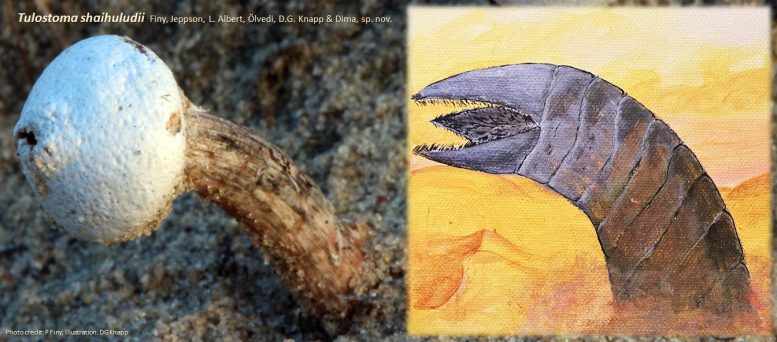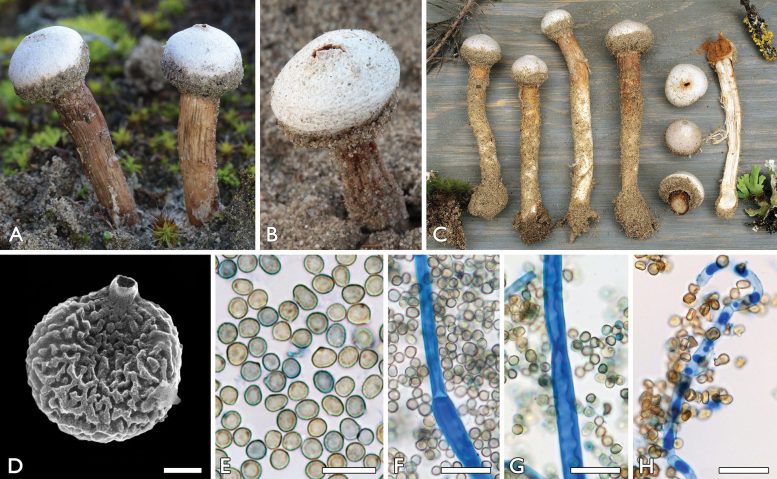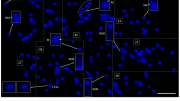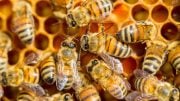
Tulostoma shaihuludii and an illustration of a ‘Shai-Hulud’ sandworm. Credit: Photo by Péter Finy; illustration by Dániel G. Knapp
The researchers were inspired by the appearance and habitat of the fungus, drawing parallels to the iconic sandworms known as ‘Shai-Hulud’ from Frank Herbert’s renowned science fiction novel.
A recently discovered species of stalked puffball, a gasteroid fungus, has been named in honor of the ‘Shai-Hulud’ sandworms from Frank Herbert’s famous science fiction series ‘Dune.’
Discovered in Hungary, the new species, Tulostoma shaihuludii, is one of four new species in the genus Tulostoma that were discovered and published in the journal MycoKeys. The other species are Tulostoma dunense, Tulostoma hungaricum, and Tulostoma sacchariolens.
Researchers chose the name due to the worm-like appearance of the species’ fruiting body, coupled with the sandy habitat of the Pannonian Steppe, where it was discovered.
The Research Team and Their Findings
The team consisted of Péter Finy (Eötvös Loránd University, Hungary), Mikael Jeppson (University of Gothenburg, Sweden), Dániel G. Knapp (Linnaeus University, Sweden), Viktor Papp (Hungarian University of Agriculture and Life Sciences, Hungary), László Albert (Hungarian Mycological Society, Hungary), István Ölvedi (Hungarian Mycological Society, Hungary), Károly Bóka (Eötvös Loránd University, Hungary), Dóra Varga (Eötvös Loránd University, Hungary), Gábor M. Kovács (Eötvös Loránd University, Hungary), and Bálint Dima (Eötvös Loránd University, Hungary).

a FP-2020-12-01-3, Fülöpháza b, d–g FP-2016-12-11 (BP112643, holotype), Tázlár c AL-2021-01-24, Bócsa h FP-2017-12-09, Orgovány a–c basidiocarps d, e basidiospores f, g capillitium with basidiospores h thin-walled, septate capillitium hyphae. Scale bars: 1 µm (d); 10 µm (e); 20 µm (f–h). Credit: a, b, e–h P. Finy c L. Albert d K. Bóka.
These discoveries have been particularly significant due to Hungary’s steppe vegetation on sandy soil being identified as a hotspot for the stalked puffballs in Europe. The research team conducted a comprehensive taxonomic revision of gasteroid fungi in Hungary, contributing to the understanding of this group’s diversity.
The discovery of Tulostoma shaihuludii demonstrates the intricate connections between species and their habitats. It also highlights the importance of geographic isolation in the emergence of new species, as seen in the case of Tulostoma dunense, which is closely related to North American species but distinctly different, as revealed by genetic analysis.
Reference: “Exploring diversity within the genus Tulostoma (Basidiomycota, Agaricales) in the Pannonian sandy steppe: four fascinating novel species from Hungary” by Péter Finy, Mikael Jeppson, Dániel G. Knapp, Viktor Papp, László Albert, István Ölvedi, Károly Bóka, Dóra Varga, Gábor M. Kovács and Bálint Dima, 29 November 2023, MycoKeys.
DOI: 10.3897/mycokeys.100.112458









Be the first to comment on "Not Science Fiction: New Species of Stalked Puffball Resembles Iconic Sandworms From Dune"